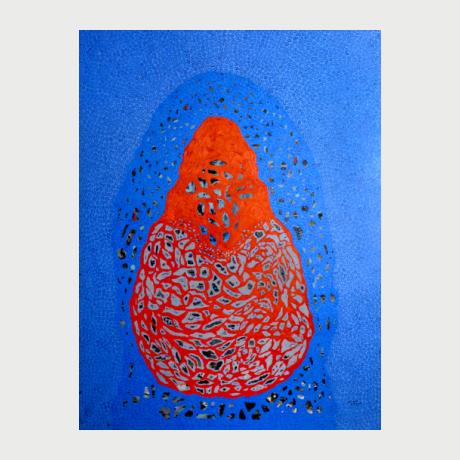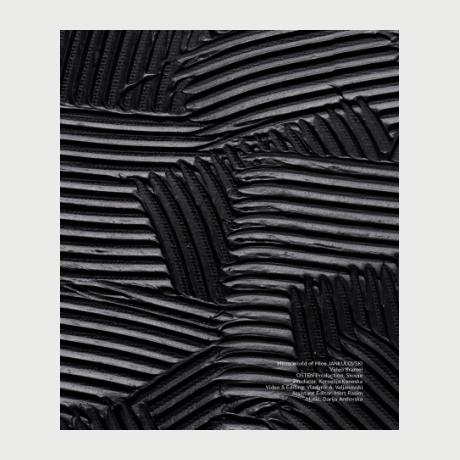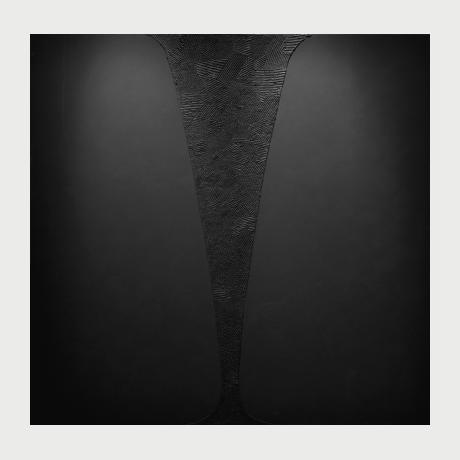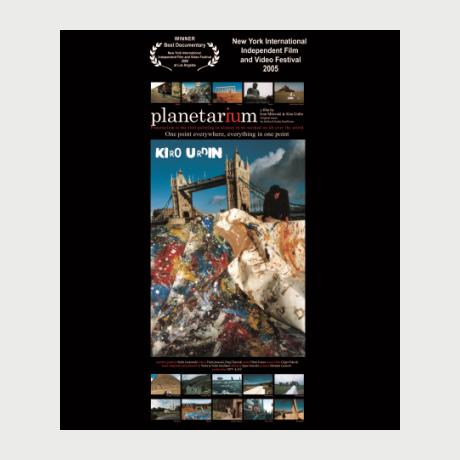OSTEN MUSEUM Skopje ART Project: Colour & Non-Colour
OSTEN MUSEUM Skopje
ART Project: Colour & Non-Colour
Paintings & Videos by
Kiro URDIN & Mice JANKULOVSKI
Curator: Kornelija Koneska
The art project Colour & Non-Colour of the OSTEN Museum Skopje showcases the creative collaboration between artists Kiro Urdin and Mice Jankulovski. Through a dynamic interplay of vibrant hues and monochromatic tones, the project explores contrasts—between presence and absence, emotion and restraint, and the tangible versus the abstract.
Urdin and Jankulovski blend expressive techniques, bold color fields meeting minimalist compositions, inviting viewers to reflect on perception and artistic duality. The project highlights OSTEN Museum's commitment to innovative contemporary art, offering a visually striking and thought-provoking experience.
The art project Colour & Non-Colour which the OSTEN Museum Skopje presents in front of the international public at the 8th International Contemporary Art Fair ArtThessaloniki 2025, features a compelling selection of two key paintings and two video works—one from each artist— highlighting their contrasting yet complementary approaches.
Kiro URDIN
Nucleus (2022, Oil on canvas, 200 x 150 cm)
A cosmic explosion of energy, Nucleus embodies Urdin’s mastery of color as a primal, almost elemental force. The painting’s impressive scale engulfs the viewer in a whirlpool of radiant blues, fiery reds, and deep violets, applied in layers with almost meditative application of numerous cube forms, seem to pulse with life. The title suggests a birth—a moment of creation where light and matter collide. Urdin’s technique recalls Abstract Expressionism’s raw physicality (think de Kooning’s Excavation), but with a distinctly contemporary sensibility, as if the digital age’s flickering screens have been translated back into visceral, organic paint. The composition pulls the eye toward a luminous central core, evoking both a celestial body and a microscopic cell—a reminder that color, at its most intense, transcends scale. This is painting as event: a burst of chromatic energy frozen in time.
Planetarium (2013, Experimental Film)
Planetarium is a mesmerizing journey into the cosmos of color and motion, where Urdin translates his painterly language into the realm of moving images. This experimental film transforms the screen into a dynamic canvas, where celestial bodies seem to collide, dissolve, and rebirth themselves in an endless dance of light.
Urdin employs abstract animation techniques to create swirling galaxies of pigment, where vibrant hues bleed into one another like interstellar nebulae. The film’s textures evoke both the tactility of his oil paintings and the fluidity of digital media—blurring the line between the handmade and the algorithmic. The absence of figurative elements heightens the sensory experience, immersing the viewer in pure chromatic energy.
Cosmology Meets Creativity: The title Planetarium suggests a scientific observation of the universe, yet Urdin’s approach is deeply poetic. The film mirrors the birth and death of stars, drawing parallels between cosmic cycles and the artist’s process—destruction and creation as intertwined forces.
Time as a Medium: Unlike static paintings, the film unfolds in time, allowing Urdin to explore color as a temporal phenomenon. Pulsing rhythms and gradual transitions mimic breathing, heartbeats, or even the slow expansion of the universe.
Digital Alchemy: By digitizing his painterly gestures, Urdin questions the nature of materiality in the 21st century. Are these artistic forms still "paint," or have they transcended into something new?
Sensory Impact & Legacy
Planetarium is less a narrative film than a meditative experience—an invitation to lose oneself in color’s emotional and metaphysical possibilities. It stands as a pivotal work in Urdin’s oeuvre, bridging his physical paintings with later digital explorations. The film also echoes avant-garde traditions, while asserting its own contemporary relevance in an age of screens and infinite visual noise.
Planetarium doesn’t just depict a universe—it becomes one, serving as an ultimate testament that color is not merely seen, but also felt through its frequency.
Mice JANKULOVSKI
Breakthrough (2024, Acrylic on canvas, 195 x 195 cm)
In stark contrast, Jankulovski’s Breakthrough is a meditation on restraint. In the square canvas, a deliberate nod to modernist purity, a monochrome black field is dominated, fractured by a rasterized vertical shape with curved corners—which justified the titular "Breakthrough." Jankulovski’s incision feels like a revealing: a glimpse of something hidden beneath the surface. The acrylic’s matte finish absorbs light, giving the work a quiet, almost meditative presence. Yet the tension is palpable—that single vertical shape disrupts the calm, suggesting a rupture in perception, a crack in the monochrome’s illusion of infinity. It’s a masterclass in minimalism’s power: less as absence, more as potential.
Macro World (2024, Video)
In Macro World, Jankulovski constructs a meditative exploration of scale, texture, and the hidden poetry of his artworks. Stripping away color almost entirely, the video immerses the viewer in a dark, black universe where microscopic details become monumental, and ordinary surfaces of his artworks transform into enigmatic landscapes.
Minimalist Cinematography: Shot in extreme close-up, the camera lingers on textures so abstracted that their original context dissolves. A crack in the acrylic paint becomes a canyon; a drop of the acrylic paint morphs into a celestial body.
Monochrome as Revelation: By eliminating color, Jankulovski amplifies light and shadows. The play of high-contrast blacks and whites evokes the starkness of charcoal drawings or early avant-garde photography (Man Ray’s rayographs, Moholy-Nagy’s photograms).
Slowness as Resistance: The video’s glacial pace defies digital culture’s obsession with speed. Each frame demands patience, echoing the philosophy of "seeing more by showing less."
The Sublime in the Neglected: Macro World uncovers beauty in Jankulovski’s ongoing fascination with entropy and the passage of time.
Scale as Illusion: The title is ironic. Is this a "macro" view of the small, or a cosmic perspective on the infinite? The ambiguity mirrors fractal geometry, where patterns repeat across dimensions.
Materiality vs. Ephemerality: Unlike Urdin’s Planetarium, which revels in color’s fluidity, Macro World fixates on the physical—yet the video medium itself renders these textures fleeting, a paradox Jankulovski leans into.
The video’s music (contemporary composition “Calisto” by Daria Andovska) heightens its hypnotic quality. It functions as a visual haiku, where every scratch and fissure carries weight. In an era of sensory overload, Macro World is a radical act of attention—a reminder that profundity lurks in the overlooked.
Macro World doesn’t document reality—it reconstructs it. A masterclass in how subtraction can reveal infinity.
DIALOGUE between URDIN and JANKULOVSKI
Where Urdin’s Planetarium explodes with color, Jankulovski’s Macro World contracts into monochrome focus. Together, they form a diptych on perception: one expansive, the other introspective.
Placed in conversation, Nucleus and Breakthrough become opposing poles of abstraction’s possibilities. Urdin’s painting is additive—color piled upon color, a maximalist celebration of sensation. Jankulovski’s is subtractive—stripping away until only the essential remains. Yet both share a preoccupation with thresholds: Urdin’s nucleus as a point of genesis, Jankulovski’s shape as a moment of fracture. Together, they ask: Is art about revelation or reduction? Can a painting be both a scream and a whisper?
These works don’t just hang on a wall—they act. Urdin’s Nucleus overwhelms; Jankulovski’s Breakthrough implores you to lean closer. The real "breakthrough" is how they redefine what abstraction can do.
Kornelija KONESKA








